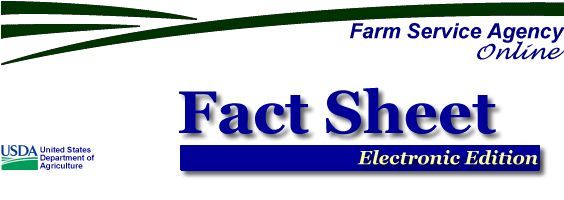 |
|
| December
2003 Bottomland Timber Establishment on Wetlands Initiative Overview The Bottomland (hardwood) Timber Establishment on Wetlands initiative is a new effort under the Conservation Reserve Program (CRP) that works to improve air and water quality as well as increase wildlife habitat along wetland areas. The initiative allows producers to enroll in a CRP practice on lands suitable for growing bottomland hardwood trees or adapted shrubs that will provide multipurpose forest and wildlife benefits. The Bottomland Timber Establishment on Wetlands initiative is administered by the USDA Farm Service Agency (FSA) through CRP, a voluntary program that helps agricultural producers safeguard environmentally sensitive land. Producers enrolled in CRP plant long-term, resource conserving covers to improve the quality of water, control soil erosion, and enhance wildlife habitat. In return, FSA provides participants with rental payments and cost-share assistance for 14 to 15 years. Producers can enroll in CRP for the Bottomland Timber Establishment on Wetlands initiative anytime through continuous CRP sign-up. Offers are automatically accepted provided the land and producer meet certain eligibility requirements. Offers for continuous sign-up are not subject to competitive bidding. More information is available in the FSA fact sheet “Conservation Reserve Program - Continuous Sign-up.” Producers in all U.S. states and territories are eligible to participate in the initiative. Goals The purpose of the initiative is to establish a stand of trees that will:
Acreage Limit The total acres allowed nationwide for the initiative is 500,000 acres. Every U.S. state has specified acreage limits. Ownership Eligibility Requirements An owner is eligible to offer land for enrollment for this CRP initiative if the owner meets one of the following requirements:
Ownership eligibility requirements are satisfied if there is any combination of continuously leasing and owning by the same “person” during the 12-month period before filing for enrollment. Eligibility for Operators An operator is eligible to offer land for enrollment in CRP when the operator meets both of the following requirements:
Satisfactory evidence may include any of the following:
Operator eligibility requirements shall be satisfied if there is any combination of leasing and owning by the same “person” during the 12-month period before filing for enrollment. Cropping History Requirements Eligible cropland enrollment in the CRP Bottomland Timber Establishment on Wetlands initiative includes cropland that is both of the following:
Sign-up Beginning Dec. 1, 2003, producers can enroll in the Bottomland Timber Establishment on Wetlands initiative through CRP. For continuous sign-up, the effective date of the CRP contract is the first day of the month following the month of approval. In certain circumstances, producers may defer the effective date for up to 6 months. If the acreage is currently under CRP contract and is within one year of the scheduled expiration date, the effective date is October 1 following the expiration date. Payment Example A producer enrolls 10 acres of eligible land the initiative. The weighted average soil rental rate for the 3 predominant soils is $50 per acre. The producer is eligible to receive the following annual rental payment: $50
per acre + $5 (maintenance rate) per acre = $55 per acre. Cost-share Assistance FSA provides cost-share assistance to participants who establish approved cover on eligible cropland. The cost-share assistance can be an amount not more than 50 percent of the participants’ costs in establishing approved practices. For More Information For more information on this and other FSA programs, contact your local FSA office or visit FSA’s Web site at: www.fsa.usda.gov
|
|
|
The U.S. Department of Agriculture (USDA) prohibits discrimination in all its programs and activities on the basis of race, color, national origin, gender, religion, age, disability, political beliefs, sexual orientation, and marital or family status. (Not all prohibited bases apply to all programs.) Persons with disabilities who require alternative means for communication of program information (Braille, large print, audiotape, etc.) should contact USDA’s TARGET Center at 202-720-2600 (voice and TDD). To file a complaint of discrimination, write USDA, Director, Office of Civil Rights, Room 326-W, Whitten Building, 1400 Independence Avenue, SW, Washington, D.C., 20250-9410, or call (202) 720-5964 (voice or TDD). USDA is an equal opportunity provider and employer. |
|
|
|
PDF (82k) |
|
|
![[Image of a Laser Printer Printing a Page]](/peth04/20041018185630im_/http://www.fsa.usda.gov/pas/publications/facts/html/images/AG00169_.GIF) Download Print Version
Download Print Version